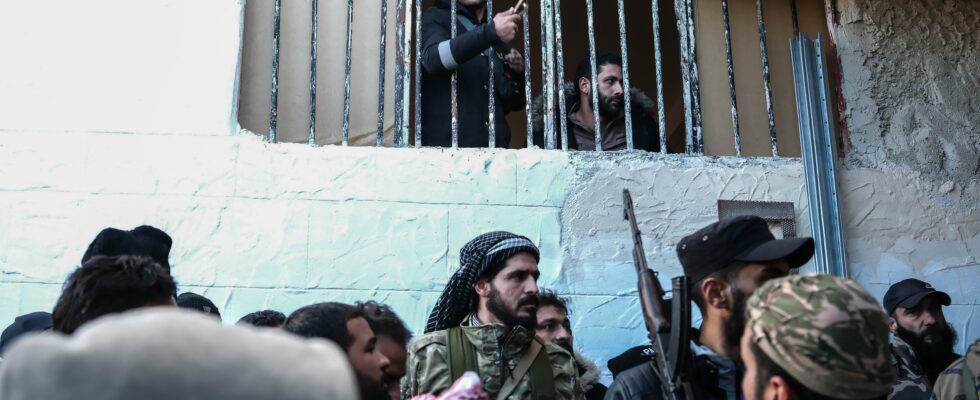“End of tyranny at Sednaya Prison.” This is what the radical Islamist group Hayat Tahrir al-Sham (HTC), at the head of the coalition of rebels in Syria which ousted Bashar al-Assad from power, wrote on Telegram this Monday, December 8. “The doors of Sednaya prison, known as the ‘human slaughterhouse’, were opened for thousands of detainees,” confirmed the Syrian Observatory for Human Rights (OSDH).
According to a reporter from Washington Post based in Iraq, lists of names purported to be those released were shared by activists on social media on Sunday, and “some Facebook posts showed men with shaved heads, believed to have been released from Sednaya, along with numbers of phone to be called by their loved ones.”
In the process, the White Helmets civilian relief group began intense searches in Sednaya prison, looking for “hidden underground cells believed to contain detainees”. He said he had deployed “search and rescue units, specialists in breaking down walls, teams responsible for opening iron doors, trained canine units and medical responders”.
“There are hundreds, perhaps thousands, of prisoners held two or three floors underground, behind electronic locks and airtight doors,” Charles Lister of the Middle East Institute warned AFP.
A “humane slaughterhouse”, according to Amnesty International
In a report published in 2017 and based on 84 testimonies, including former officials or guards of Sednaya prison, former detainees, judges and lawyers, as well as national and international experts on detention in Syria, the NGO Amnesty International recorded thousands of executions and denounced “a real policy of extermination” in Sednaya, which she describes as a “human slaughterhouse”.
Amnesty then explained that “up to 50 people can be hanged in a single night”, and that the families of the victims “are not informed of the fate reserved for them”. The testimonies collected spoke of torture and rape. The NGO believed that everything was done to “humiliate, degrade, make sick, starve and ultimately kill those who are locked up there”.
“Salt chamber” for storing corpses
More recently, in 2022, a report published by the association of detainees and missing persons of Sednaya prison (ADMSP) mentioned the presence in the prison of a “salt chamber”, created after 2011. The floor there was covered “with approximately 20 to 30 cm of salt”, and “the bodies of the prisoners placed with a number written on their foreheads and under a layer of salt” for at least 48 hours, before being transferred to a hospital to produce the death certificate.
The report noted that the use of torture intensified after 2013, and estimated that between 2011 and 2018, “30,000 to 35,000 Sednaya detainees were executed or died from systematic torture, lack of medical care or starvation.”
Since the start of the “revolution” in 2011, more than 100,000 people have died in Syrian prisons, notably under torture, the Syrian Observatory for Human Rights (OSDH) estimated in 2022. At the same time, OSDH reported that around 30,000 people had been detained in Sednaya. And only 6,000 of them had been released.
